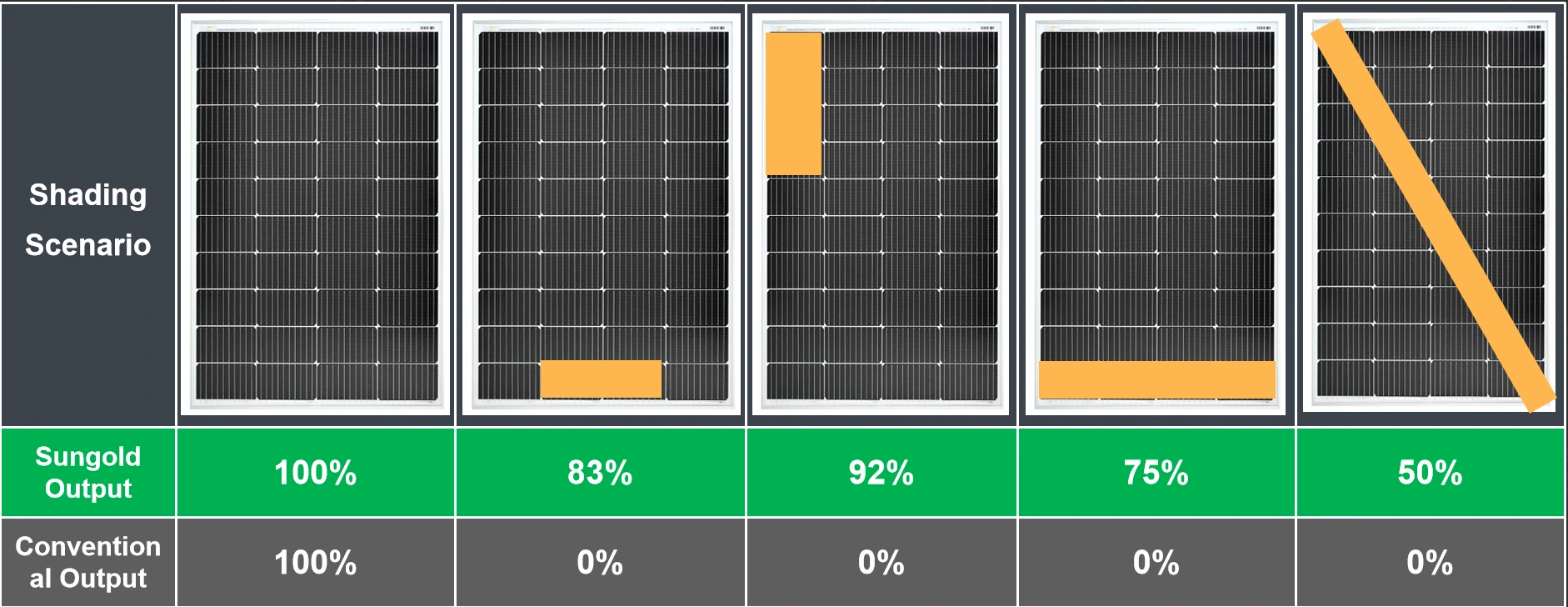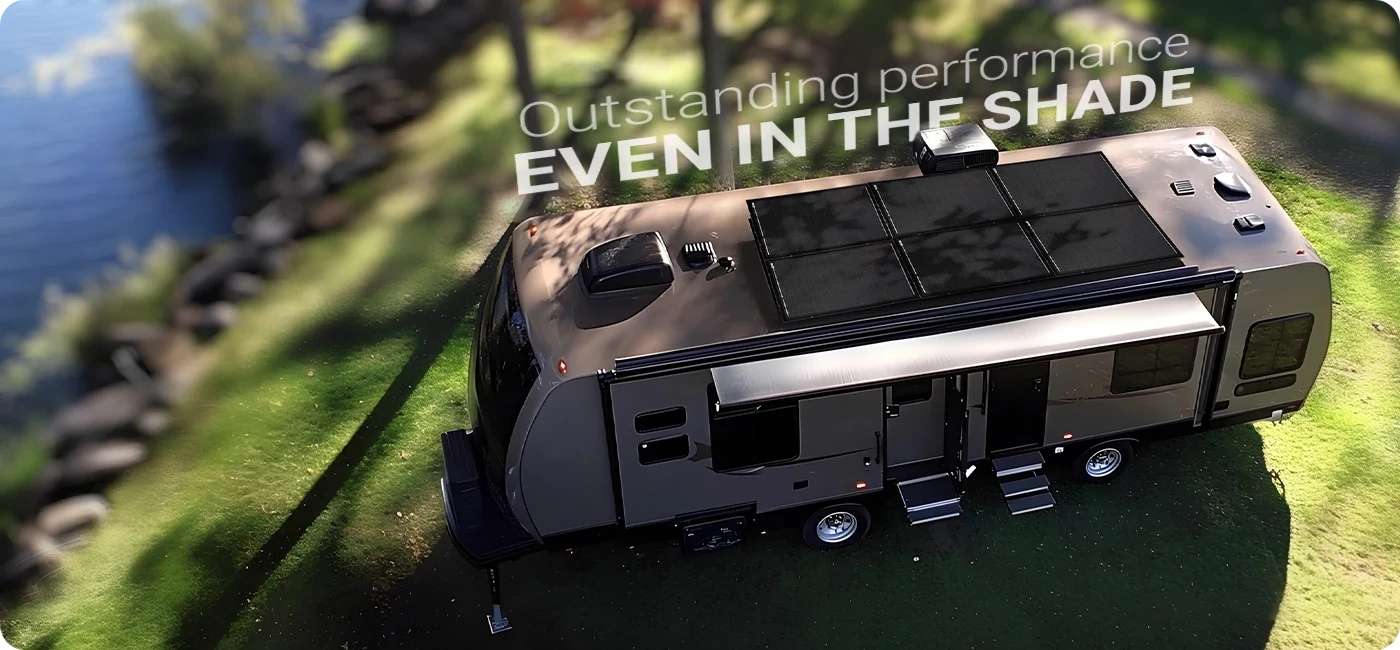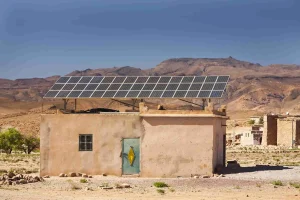Partial Shading: A Hidden Threat to Solar Panel Efficiency
Partial shading—caused by trees, chimneys, utility poles, or even bird droppings—remains one of the most underestimated threats to solar panel performance. In a typical photovoltaic (PV) system, solar cells are connected in series. When even one cell is shaded, it affects the entire string’s current, significantly reducing power output.
Beyond energy loss, this mismatch can lead to localized overheating, known as the hotspot effect, which damages panel materials and shortens lifespan. To counter this, engineers use bypass diodes.
What Are Bypass Diodes and How Do They Work?
Bypass diodes are protective electrical components embedded within solar panels. Their job? To reroute current around shaded or underperforming cells to maintain the circuit’s flow.
When the voltage in a shaded cell string drops significantly, bypass diodes become forward-biased and start conducting electricity. This process ensures that current bypasses the shaded portion, preventing the entire module from being dragged down.
What Is the Partial Shading Threshold?
The partial shading threshold refers to the point at which the voltage drop in a shaded string is sufficient to activate the bypass diode.
Typically, when 15–30% of a cell group is shaded, and its reverse voltage reaches 0.4V–0.7V, the diode activates. This range varies depending on the diode type:
- Silicon diodes: ~0.7V
- Schottky diodes: ~0.4V
At this threshold, the shaded cells essentially become a resistive load, risking energy loss and thermal damage if not bypassed.
Why Standard Bypass Diodes Aren’t Enough
While bypass diodes offer basic protection, they are reactive—they only work after shading impacts the module. And since one diode typically protects an entire group of 15–20 cells, even minimal shading can deactivate a large portion of the panel.
This is where next-generation technology enters the scene.
Cell-Level Shadow Management: A Smarter Approach
Companies like Sungold have introduced cell-level shadow management technology, integrating micro-scale current routing mechanisms within each panel. Instead of waiting for a diode to engage, these systems:
- Monitor resistance changes at the cell level
- Automatically reroute current in real-time
- Minimize hotspot formation
- Maintain partial power output even during shading
Real-World Impact
In simulations comparing Sungold’s 12-zone anti-shading panels with conventional ones:
- Under minor shading, traditional panels dropped to 0% output
- Sungold panels retained 75–92% output, depending on shading pattern

Best Practices for Minimizing Shading Loss
To maximize solar performance and avoid unnecessary diode activation, consider the following design strategies:
- Use panels with multiple bypass diodes: Prefer panels with more segments (e.g., 3 bypass diodes per 60-cell panel)
- Optimize installation angle: Position panels to avoid daily or seasonal shading
- Choose microinverter or optimizer systems: Module-level power electronics (MLPE) allow independent panel performance
- Upgrade to anti-shading technology: Especially for mobile, residential, or urban applications
Frequently Asked Questions
What exactly is a “partial shading threshold”?
It’s the minimum shading level that causes a sufficient voltage drop in part of the solar panel to activate a bypass diode—typically around 15–30% coverage.
Does frequent bypass diode activation damage panels?
Yes. Repeated diode switching leads to heat buildup and potential diode failure, affecting long-term panel integrity.
Can shading on just one panel affect the entire system?
In traditional string inverter setups, yes. One underperforming panel can lower the performance of the entire string. MLPE systems can isolate this effect.
What’s the difference between bypass diodes and cell-level shadow management?
Bypass diodes react after damage begins; cell-level tech proactively reroutes current to prevent performance drops and hotspots entirely.
Conclusion: Go Beyond the Basics
Bypass diodes are vital, but as solar deployment expands to balconies, RV rooftops, and tree-lined suburbs, traditional protection isn’t enough. Understanding the partial shading threshold—and upgrading to smarter shading management—can mean the difference between system failure and sustained performance.
If you’re designing or upgrading a solar system, prioritize shading resilience. Technologies like Sungold’s anti-shading panels are leading the way in delivering power—even when the sun doesn’t shine perfectly.
Understanding how bypass diodes and shading thresholds impact your solar panel performance is just the beginning. If you’re designing, upgrading, or troubleshooting your solar setup, choosing the right anti-shading technology can make a significant difference.
🔧 Need expert advice or a custom solar solution?
📞 Contact us or
🌐 Visit our website to explore Sungold’s full range of anti-shading solar panels and technologies.
Let us help you unlock more energy—anywhere the sun shines.







